Etchells’ work Let it come. Let it come quotes two lines in translation from Arthur Rimbaud’s influential 1873 poem Une Saison en Enfer (A Season in Hell): “Let it come, Let it come. The time we can love.” Installing the work for the first time on the exterior of Kestner Gesellschaft, Etchells positions its intimate invocation as a bold public imperative or demand, calling for a future world that can be loved as well as of a future, long dreamed of, in which love may truly be possible. As is often the case with Etchells’ work Let it come. Let it come sets up a dialogue between the content of the text and its context – bringing Rimbaud’s historical and deep personal yearning into an evocative dialogue with the present global situation of its install – pandemic lockdowns and social distancing, political drifts to the right and the ongoing repression of the rights of LGBTQ+ people.
Discussing the work for the opening Etchells’ wrote:
“I’m interested in the language of the spell, the invocation. Words as a form of calling to the impossible. A calling from the present to a future that is for the moment, uncertain, impossible.
Reading this fragment of Rimbaud out of context I am thinking about how we are left yearning for a time in which love might be possible because something in our present context denies it. The world – its social, political, economic and other structures – stands in the way of love.
I am thinking about love as an articulation of desire or romantic relation in its many contradictory and diverse forms. And at the same time I’m thinking about broader and even new forms of love – about structures of taking care, of offering support and shelter, of looking after each other as human beings. About when these things will be possible.
Rimbaud’s call for this other time – a different time than his, a different time than ours – in which (another) love might be possible is at the same time an impatient critique of the present moment, the limits and restrictions it places on us in social, political, ethical terms, and the impossibility it makes out of love”.
About Tim Etchells’ neon and LED works
Etchells’ neon and LED pieces often draw on his broader fascinations as an artist, writer and performance maker, exploring contradictory aspects of language – the speed, clarity and vividness with which it communicates narrative, image and ideas, and at the same time its amazing propensity to create a rich field of uncertainty and ambiguity.
Through simple phrases spelt out in neon, LED and other media, Etchells strives to create miniature narratives, moments of confusion, awkwardness, reflection and intimacy in public and gallery settings. Encountering the neon sign works, in the streets of a city or in the space of a white cube gallery, the viewer becomes implicated in a situation that’s not fully revealed, or a linguistic formulation that generates confusion or ambiguity. As often in Etchells’ work, in the neons the missing parts of the picture are as important as the elements that are present. Invoking a story, or projecting an idea out-of-context, the work invites us in, but into what exactly we can’t be sure.
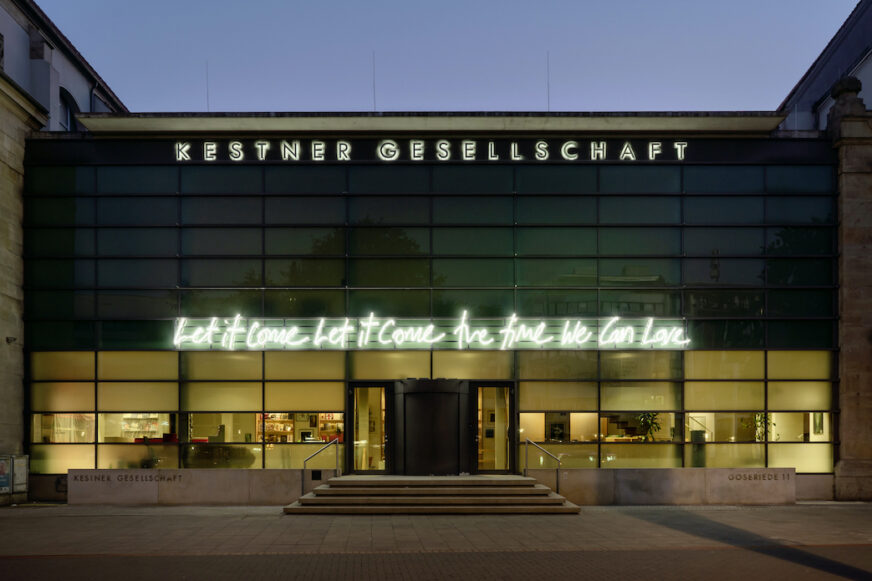
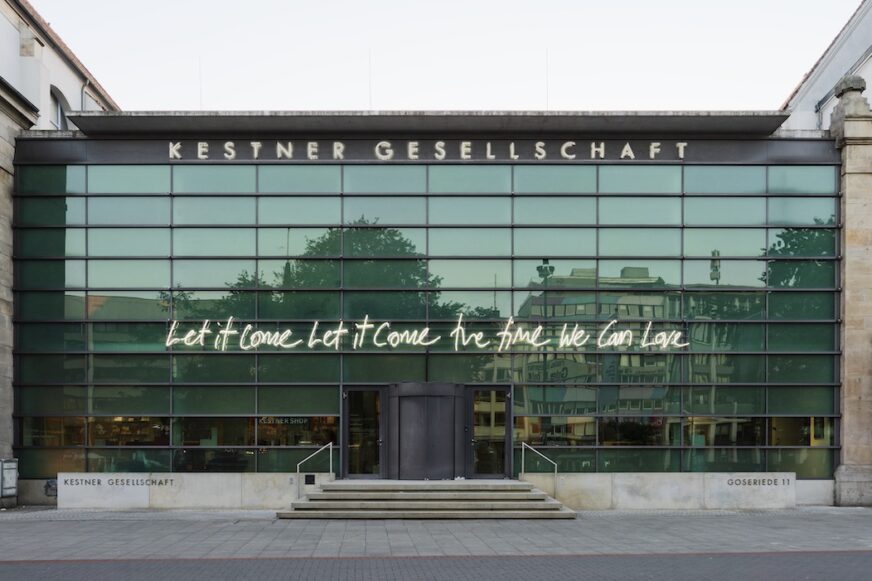


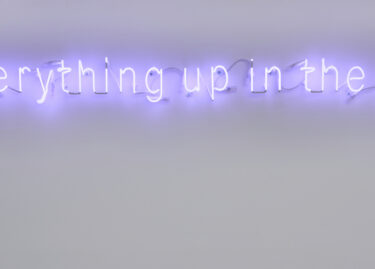 Up in the Air (Purple), 2023
Up in the Air (Purple), 2023 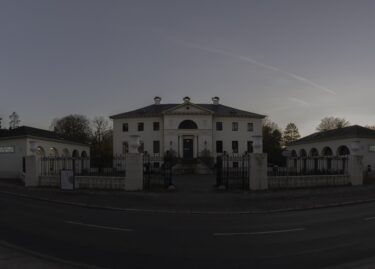 Double Seeing, 2021
Double Seeing, 2021 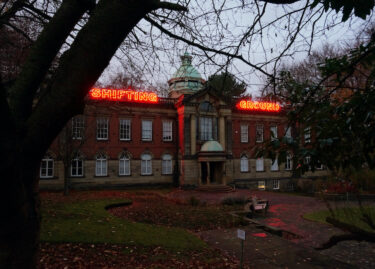 Shifting Ground, 2021
Shifting Ground, 2021 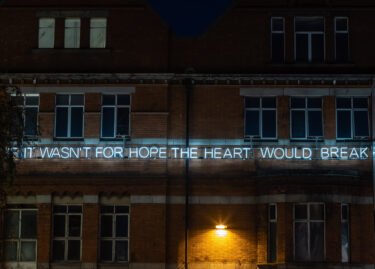 If It Wasn’t For Hope, 2021
If It Wasn’t For Hope, 2021